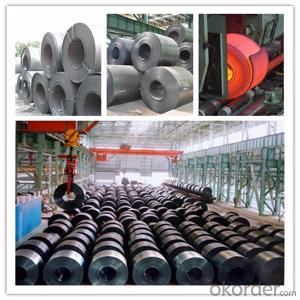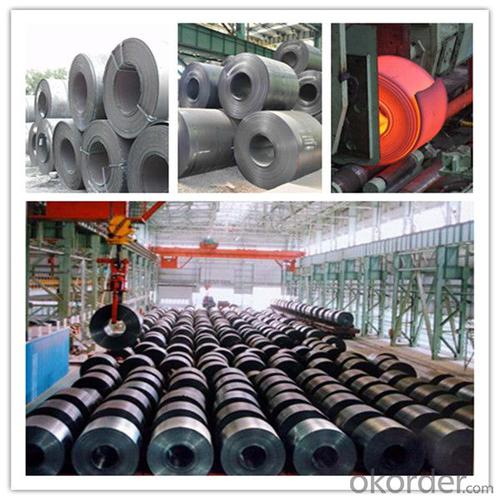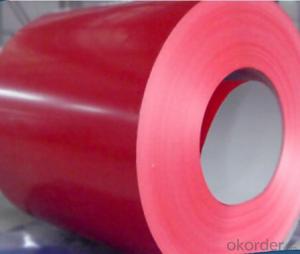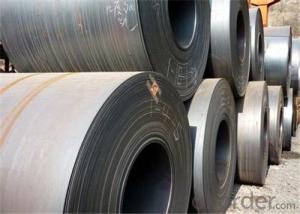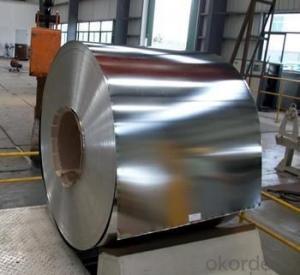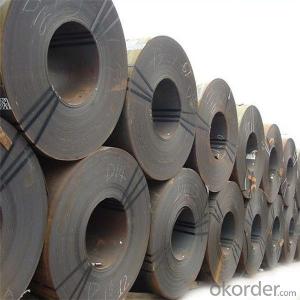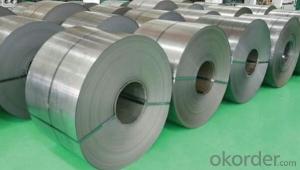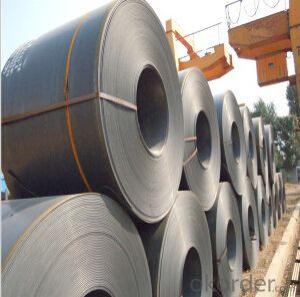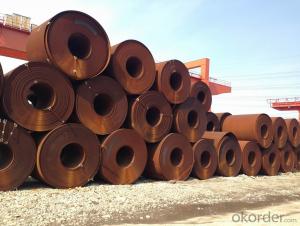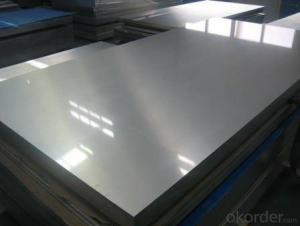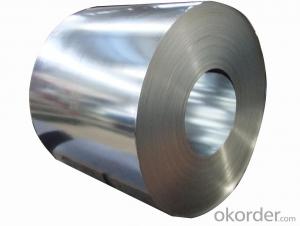A36 SS400 Hot Rolled Steel Coil HR Coil for Construction
- Loading Port:
- China main port
- Payment Terms:
- TT OR LC
- Min Order Qty:
- 20 m.t.
- Supply Capability:
- 10000 m.t./month
OKorder Service Pledge
OKorder Financial Service
You Might Also Like
Specification
ASTM A36 SS400 steel strip hot rolled steel coil from china
Steel Plate Description
1. Steel Material: SGCC,SGCH,SGCD1-SGCD3,DX51D
2. Standard: ASTM, JIS
3. Grade: SS400, A36
4. Thickness: 1.5-15 mm
5. Width: 600-1500mm, mainly in 914, 1000, 1219, 1250mm.
6. Surface : Oiled
7. Outside diameter: According to the weight of coil
8. Coil weight: 20MT/Coil or as your request
Certificate | ISO9001, BV test |
MOQ | 20MT |
Supply Ability | 10000MT/month |
OEM | Accept |
Price Item | FOB, CFR, CIF |
Payment terms | T/T, L/C at sight |
Delivery time | within 15-30 days upon receipt original L/C at sight |
Packaging | 1) Export standard packing in mill 2) Vertical or horizontal, properly packed for ocean freight exportation in 3) Ocean shipping in bulk-cargo |
Steel Plate Show
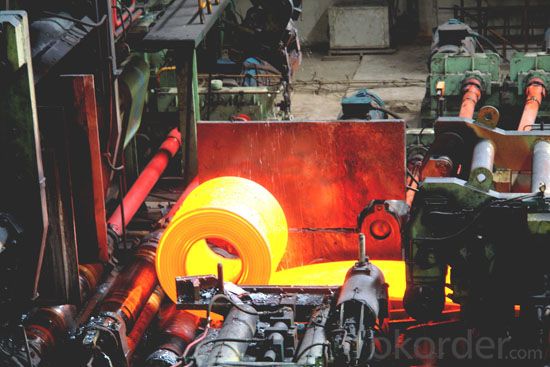
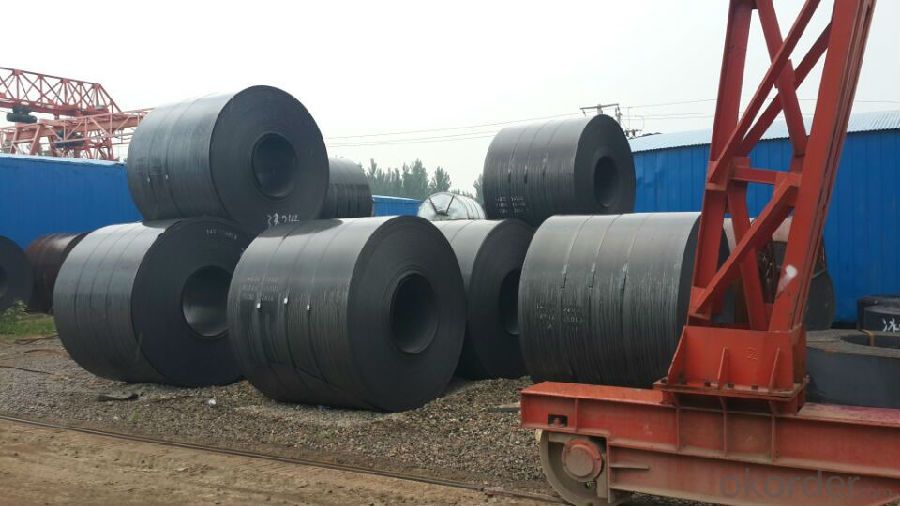
Sales and Market
we have established business relationships with clients in the United States, Japan,
Southeast Asia and other 10 countries and regions all over the world.
Why will you choose us?
1. Prime quality and competitive pirce
2. Good reputation and large market
3. Big company scale
4. Good service and prompt reply
- Q: How are steel coils used in the packaging industry?
- Steel coils are used in the packaging industry to create sturdy and durable packaging materials, such as metal drums, cans, and containers. The coils are unwound and shaped into the desired form, providing a strong and protective barrier for various products during storage and transportation.
- Q: Recently I bought Bleach's Grimmjow's replica sword from swordsswords and I was wondering how strong is 440 steel when used for a 21 inch blade? Can it cut effectively? Is it dangerous?
- 440 is stainless steel, and isn't designed for functional swords. Carbon steel blades are. I'd say that if you're looking for a functional sword, forget about this one. It's probably a wall-hanger. Most swords today are.
- Q: I am working on a hydrogen generator, but the stainless steel I am using corrodes and turns the water brown. Can anyone tell me if there is stainless steel that does not corrode, and if so, what is it called and where can I get some.Thank you.
- You are not using stainless steel.
- Q: Can steel coils be used in high-temperature applications?
- Yes, steel coils can be used in high-temperature applications. Steel is known for its excellent strength and resistance to heat, making it a suitable material for various industrial processes that involve high temperatures. It can withstand and maintain its structural integrity even under extreme heat conditions.
- Q: What are the dimensions of steel coils used in the building materials industry?
- The dimensions of steel coils used in the building materials industry can vary depending on the specific requirements of the project. However, common dimensions for steel coils in this industry range from 0.15mm to 3.5mm in thickness and 600mm to 2000mm in width. The length of the coils can also vary, typically ranging from 1000mm to 6000mm.
- Q: What are the different types of steel coil slitting blades?
- There are several different types of steel coil slitting blades, each designed for specific applications and materials. Some of the most common types include: 1. Circular slitting blades: These are the most commonly used blades for slitting steel coils. They are circular in shape and have a sharp edge that cuts through the coil as it rotates. Circular slitting blades can be made from various materials, such as high-speed steel or tungsten carbide, depending on the desired cutting performance and durability. 2. Arbors: Arbors are another type of steel coil slitting blade that is used in conjunction with circular slitting blades. They are cylindrical in shape and hold the circular blade in place, allowing for precise and consistent slitting of the coil. 3. Shear slitting blades: Shear slitting blades are used for cutting thicker and harder materials, such as stainless steel or aluminum. They have a straight edge and work by shearing the material apart, rather than cutting through it like circular blades. Shear slitting blades are typically made from high-quality tool steel to withstand the high forces involved in cutting thicker materials. 4. Crush cut slitting blades: Crush cut blades are used for slitting softer materials, such as paper or plastic. These blades have a blunt edge that crushes and tears the material, rather than cutting it cleanly. Crush cut blades are often made from materials like carbon steel or hardened stainless steel. 5. Razor slitting blades: Razor slitting blades are used for slitting delicate materials that require a clean and precise cut, such as thin films or foils. These blades have an extremely sharp edge that slices through the material without causing any damage or distortion. Razor slitting blades are typically made from high-quality stainless steel or tungsten carbide. It is important to select the appropriate type of steel coil slitting blade based on the specific application, material, and desired cutting performance. The choice of blade will greatly impact the quality and efficiency of the slitting process.
- Q: What are the different types of coil slitting machines?
- In the market, one can find various coil slitting machines, each designed to meet specific requirements and preferences. Some commonly used types are as follows: 1. Rotary shear slitters: These machines employ rotary knives mounted on a rotating drum to slice the coil into narrow strips. They are perfect for high-speed operations and can handle large quantities of material. 2. Loop slitters: Loop slitting machines pass the coil through a loop to maintain tension and prevent material damage during the slitting process. They are suitable for delicate materials or those prone to deformation. 3. Turret slitters: Turret slitting machines have multiple sets of slitting knives mounted on a rotating turret. This enables quick and easy switching between various slitting configurations, reducing downtime and increasing productivity. 4. Drag slitters: Drag slitting machines utilize a stationary knife and a moving clamp to hold and pull the coil through the cutting process. They are versatile and can handle a wide range of materials, including thick or heavy coils. 5. Crush slitters: Crush slitting machines employ a set of opposing rollers to crush and cut the coil material. They are commonly used for softer materials or those that are challenging to cut with traditional knives. 6. Laser slitters: Laser slitting machines make use of a high-powered laser beam to precisely cut through the coil material. They offer unparalleled accuracy and are suitable for high-end applications or materials with complex shapes. Each type of coil slitting machine has its own advantages and limitations. The choice of machine depends on factors such as the type of material, required speed, desired accuracy, and production volume.
- Q: How are steel coils used in the production of wire products?
- Steel coils are an essential component in the production of wire products. These coils are typically made from high-quality steel and are used as a raw material for wire drawing processes. Wire drawing is a manufacturing technique used to reduce the diameter of the steel coil and transform it into various wire products. To begin the process, a steel coil is placed on a wire drawing machine. The machine then pulls the coil through a series of dies, which are progressively smaller in size. As the coil passes through each die, the diameter of the wire is reduced, resulting in a thinner and longer strand of wire. This process can be repeated several times until the desired wire thickness is achieved. Once the wire is drawn, it can be further processed to create various wire products such as fencing, nails, screws, springs, and electrical wires. The wire can be cut to specific lengths, bent, or shaped according to the intended use. Additionally, it can undergo treatments such as galvanizing or coating to enhance its durability and resistance to corrosion. Steel coils provide several advantages in the production of wire products. Firstly, they offer a consistent and uniform material, ensuring that the resulting wire products have consistent quality and performance. Secondly, steel coils are easily transportable and can be stored efficiently, making them a cost-effective option for manufacturers. Lastly, the versatility of steel allows for the production of wire products with different tensile strengths and properties to meet specific industry requirements. In conclusion, steel coils play a crucial role in the production of wire products. They are the primary raw material used in wire drawing processes, where they are transformed into various wire products through a series of reduction steps. The resulting wire products find applications in a wide range of industries, making steel coils an indispensable component in the manufacturing sector.
- Q: What is the average lead time for receiving replacement steel coils?
- The average lead time for receiving replacement steel coils can vary depending on various factors such as the supplier, location, and specific requirements. It is recommended to contact the supplier directly for an accurate estimation of the lead time.
- Q: ...particularly for jewelry?
- Steel Reserve (211) the beer...drink responsible...never drive when U had a few Oh I had my ring stolen at a bar It was stainless silver...PeAcE
Send your message to us
A36 SS400 Hot Rolled Steel Coil HR Coil for Construction
- Loading Port:
- China main port
- Payment Terms:
- TT OR LC
- Min Order Qty:
- 20 m.t.
- Supply Capability:
- 10000 m.t./month
OKorder Service Pledge
OKorder Financial Service
Similar products
Hot products
Hot Searches
Related keywords
